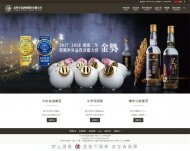KUKA 2018
Abstract
KUKA is one of the leading manufacturers of industrial robots worldwide but this has not always been the case. Founded in 1898 as a privately owned German company, KUKA’s aim was to create affordable lighting for houses and streets. It took the company 82 years to transform itself into a publicly traded conglomerate successfully innovating in welding technology and, subsequently, in industrial robot technology. KUKA’s strategic reorientation to focus on robot technology, mainly for the automotive industry, and the continued resignation of the company’s CEOs until Till Reuter took on the role in 2009 was led by several activists shareholders who owned a majority stake in the company, before Midea, a Chinese home appliance company, acquired 95% of KUKA’s shares in January 2017. By the time Midea became KUKA’s parent, the company had transformed into an international company specialized in robotics and pioneer in electronics, healthcare and the integration of hardware and software for the industrialized Internet of Things. In December 2017, KUKA was facing several challenges – apart from competing against other established global robotic companies such as Fanuc, Yaskawa and ABB, KUKA is now also competing against hundreds of new low-cost Chinese robotics companies in China, where KUKA wants to become number one robotics company. Moreover, revenues from robot sales in the automotive industry where the company is the leader are slowing down, orders at the company’s biggest division are falling, and partly pressurized by its new parent company, KUKA has decided to enter the world of consumer robotics, an already highly competitive industry. How can a high-end company like KUKA innovate in the consumer mass market, reach number one position in China and maintain customer loyalty to prevent other low-cost companies from taking KUKA’s market share?
Detailed information
| Case ID | 18-1081 |
|---|---|
| Published | 2018 |
| Industry | MISCELLANEOUS PRODUCTION MACHINERY AND MACHINE PARTS |
| Analyzed Area | Competitive strategy |
| Pages | 27 |
| Language | English |
| Teaching Note | Attached |

 Brochure
Brochure
 Info Session
Info Session
 Application
Application
 Alumni Voices
Alumni Voices






